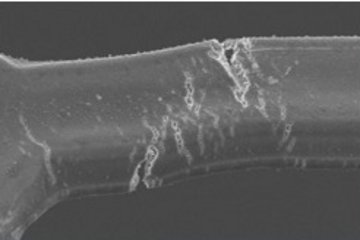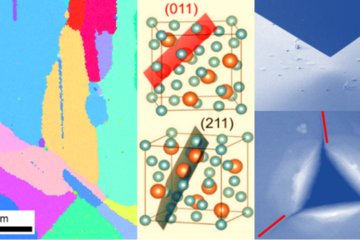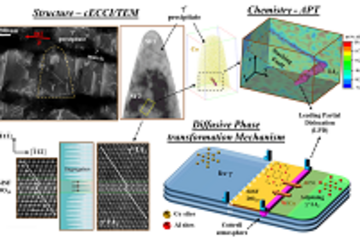All genres
41.
Journal Article
Hydrogen-assisted failure in Inconel 718 fabricated by laser powder bed fusion: The role of solidification substructure in the embrittlement. Scripta Materialia 207, 114308 (2022)
42.
Journal Article
A sustainable ultra-high strength Fe18Mn3Ti maraging steel through controlled solute segregation and α-Mn nanoprecipitation. Nature Communications 13 (1), 2330 (2022)
43.
Journal Article
Hydrogen-based direct reduction of iron oxide at 700°C: Heterogeneity at pellet and microstructure scales. International Journal of Minerals, Metallurgy and Materials 29 (10), pp. 1901 - 1907 (2022)
44.
Journal Article
Making sustainable aluminum by recycling scrap: The science of “dirty” alloys. Progress in Materials Science 128, 100947 (2022)
45.
Journal Article
Hydrogen/ Deuterium Detection in Ferrite-Austenite Dual Phase Steels. Microscopy and Microanalysis 28 (S1), pp. 1662 - 1663 (2022)
46.
Journal Article
Mechanisms of austenite growth during intercritical annealing in medium manganese steels. Scripta Materialia 206, 114228 (2022)
47.
Journal Article
High stress twinning in a compositionally complex steel of very high stacking fault energy. Nature Communications 13, 3598 (2022)
48.
Journal Article
Recrystallization kinetics, mechanisms, and topology in alloys processed by laser powder-bed fusion: AISI 316L stainless steel as example. Materialia 20, 101236 (2021)
49.
Journal Article
The origin of abnormal grain growth upon thermomechanical processing of laser powder-bed fusion alloys. Materialia 20, 101243 (2021)
50.
Journal Article
Chemical heterogeneity enhances hydrogen resistance in high-strength steels. Nature Materials 20, pp. 1629 - 1634 (2021)
51.
Journal Article
Symbiotic crystal-glass alloys via dynamic chemical partitioning. Materials Today 51, pp. 6 - 14 (2021)
52.
Journal Article
Ultrastrong and Ductile Soft Magnetic High-Entropy Alloys via Coherent Ordered Nanoprecipitates. Advanced Materials 33 (37), 2102139 (2021)
53.
Journal Article
Localized deformation inside the Lüders front of a medium manganese steel. Materials Science and Engineering A: Structural Materials Properties Microstructure and Processing 824, 141816 (2021)
54.
Journal Article
Sustainable steel through hydrogen plasma reduction of iron ore: Process, kinetics, microstructure, chemistry. Acta Materialia 213, 116971 (2021)
55.
Journal Article
3d transition-metal high-entropy Invar alloy developed by adjusting the valence-electron concentration. Physical Review Materials 5 (4), 044406 (2021)
56.
Journal Article
The hidden structure dependence of the chemical life of dislocations. Science Advances 7 (16), eabf0563 (2021)
57.
Journal Article
Enhancement of the tensile properties and impact toughness of a medium-Mn steel through the homogeneous microstrain distribution. Materials Characterization 174, 110992 (2021)
58.
Journal Article
Beyond Solid Solution High‐Entropy Alloys: Tailoring Magnetic Properties via Spinodal Decomposition. Advanced Functional Materials 31 (7), 2007668 (2021)
59.
Journal Article
Intercritical annealing to achieve a positive strain-rate sensitivity of mechanical properties and suppression of macroscopic plastic instabilities in multi-phase medium-Mn steels. Materials Science and Engineering A: Structural Materials Properties Microstructure and Processing 803, 140469 (2021)
60.
Journal Article
Comparative study of hydrogen embrittlement resistance between additively and conventionally manufactured 304L austenitic stainless steels. Materials Science and Engineering A: Structural Materials Properties Microstructure and Processing 803, 140499 (2021)











